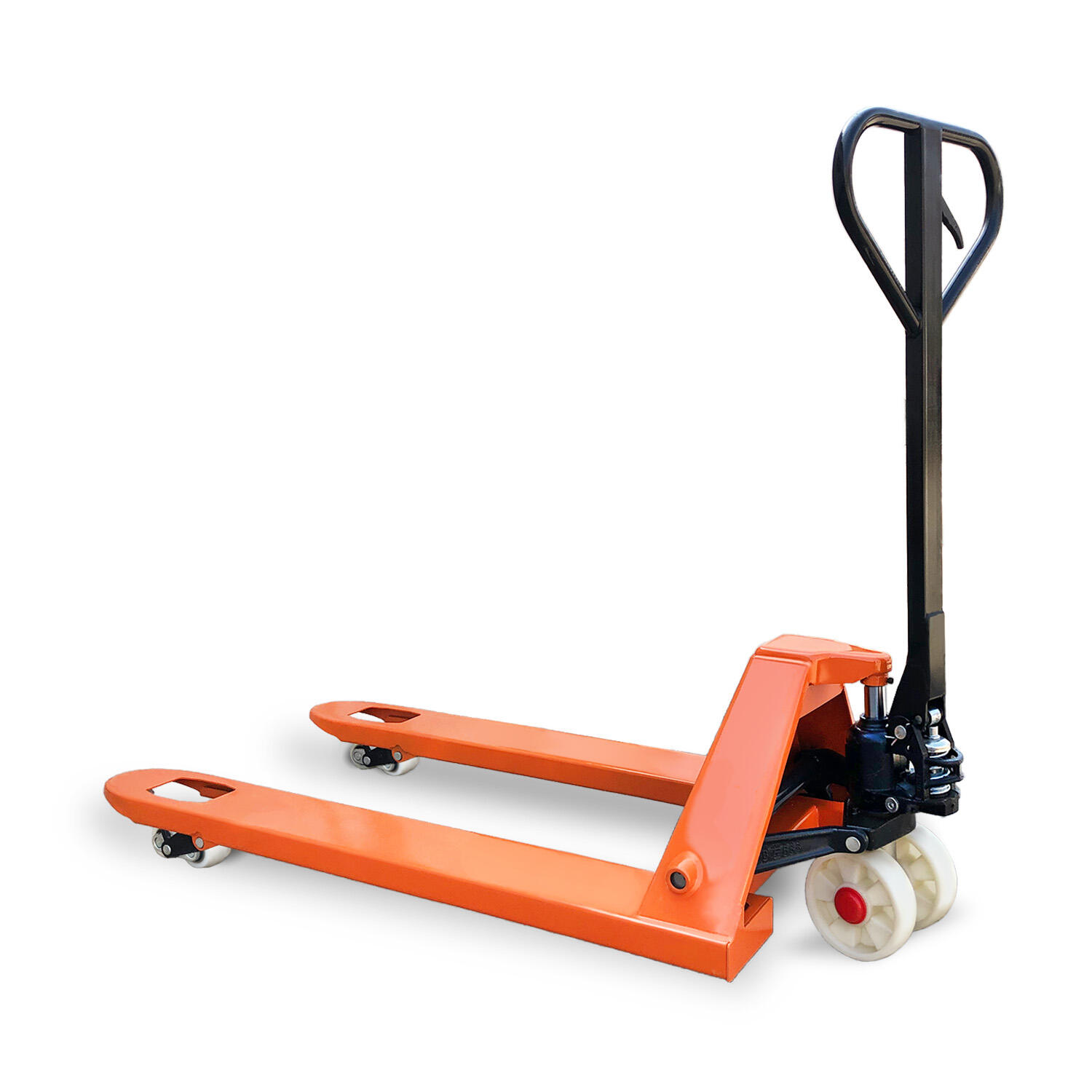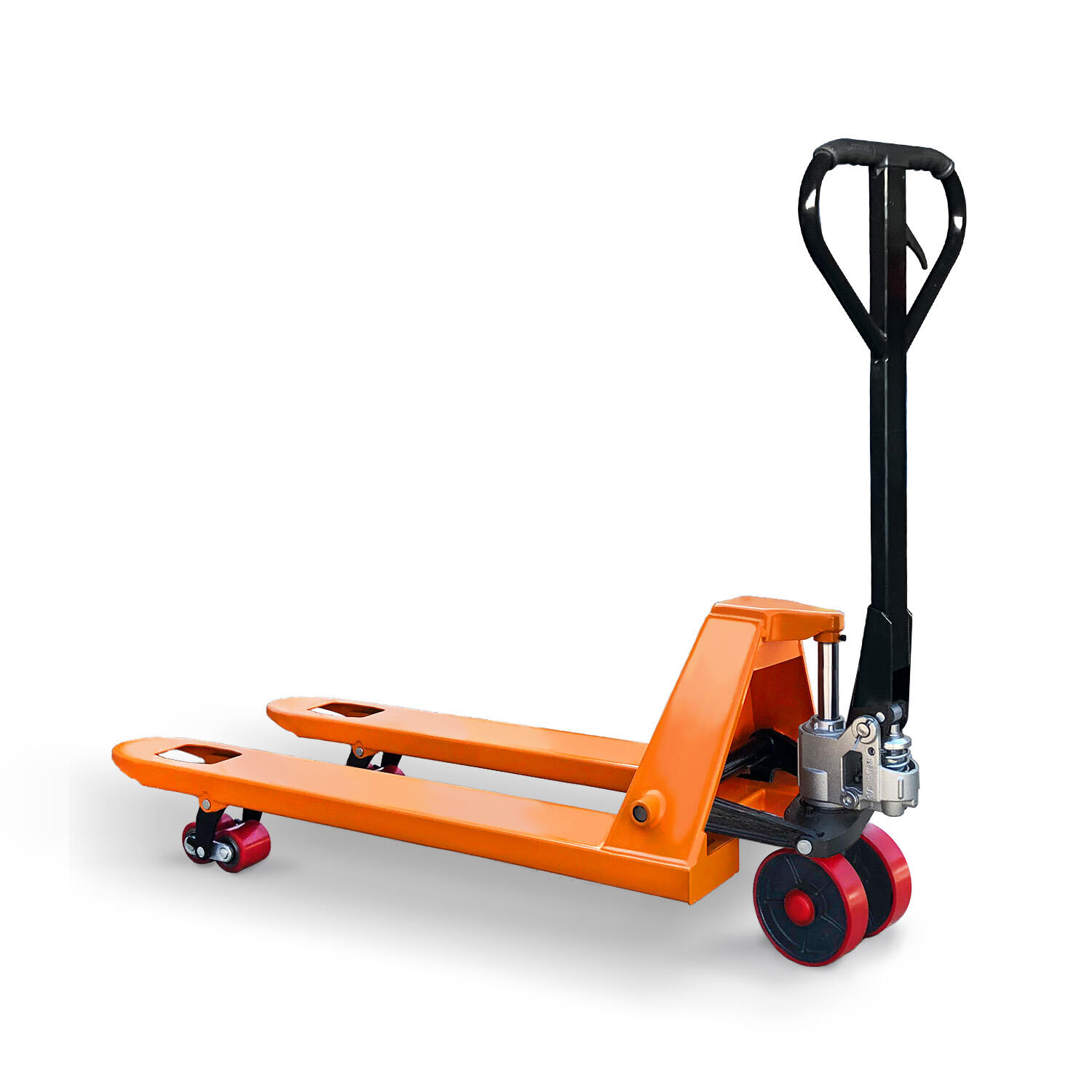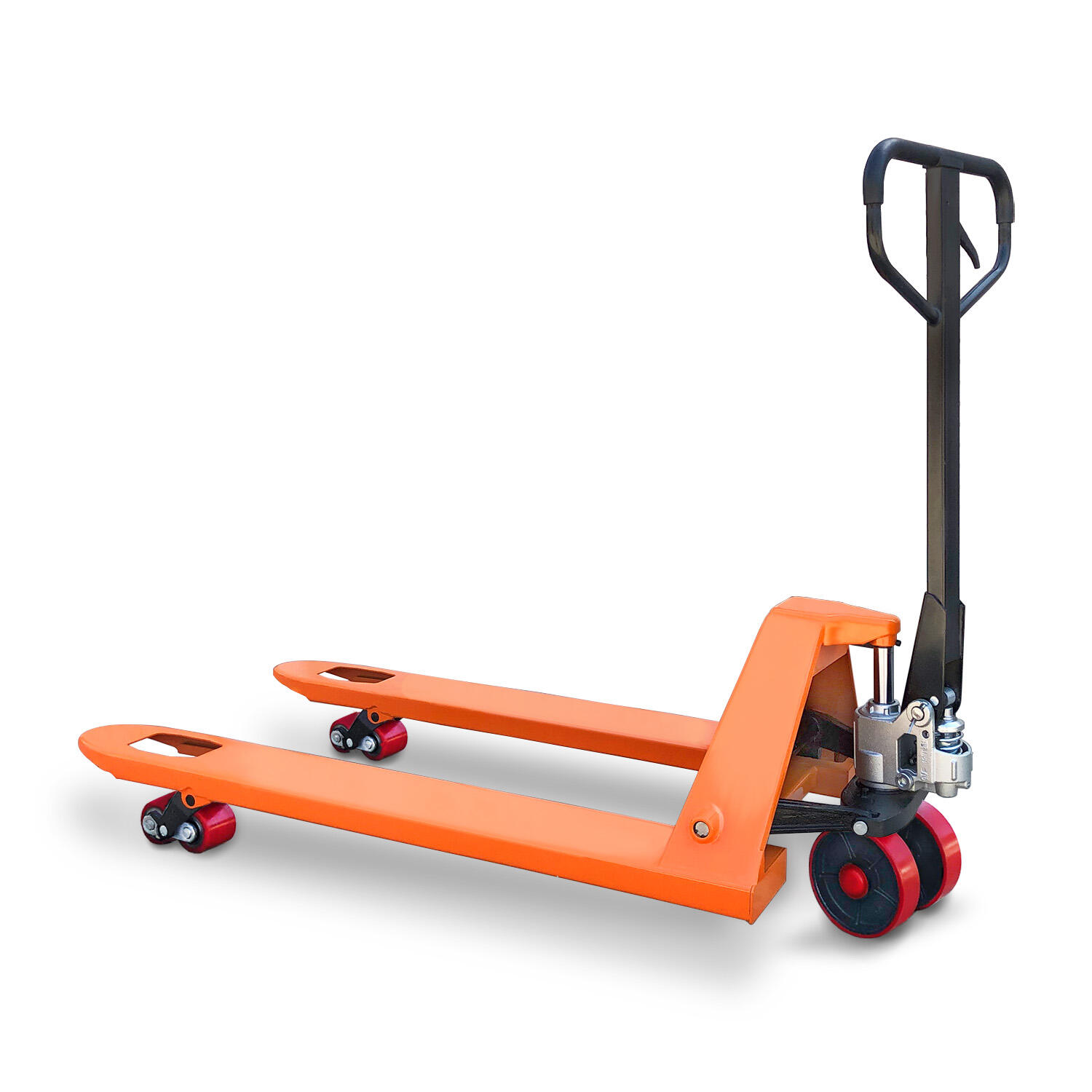Ein manueller hydraulischer Palettenhubwagen ist ein äußerst effizientes und vielseitiges Werkzeug, das entwickelt wurde, um das Heben und Bewegen von palettierten Lasten in einer Vielzahl von Arbeitsumgebungen zu vereinfachen. Indem er die Zuverlässigkeit manueller Bedienung mit der Kraft der Hydrauliktechnologie kombiniert, ist er zum Standard in Lagerhallen, Verteilzentren, Produktionsanlagen und Einzelhandlungs-Lagerräumen geworden, wo effizientes Materialhandling für den täglichen Betrieb entscheidend ist. Das kennzeichnende Merkmal eines manuellen hydraulischen Palettenhubwagens ist sein hydraulisches Hebesystem, das es dem Bediener ermöglicht, schwere Paletten mit minimalem körperlichem Aufwand anzuheben. Durch das Pumpen des Handgriffs wird Hydraulikflüssigkeit unter Druck gesetzt, wodurch sich die Gabelzinken gleichmäßig und sanft heben lassen. Dieses System macht eine mühsame manuelle Hebearbeit überflüssig, reduziert signifikant das Risiko von muskuloskeletalen Verletzungen und ermöglicht es Bedienern unterschiedlicher körperlicher Stärke, den Hubwagen sicher zu bedienen. Der hydraulische Mechanismus ist präzise konzipiert und erlaubt kontrolliertes Heben auf Höhen, die typischerweise zwischen wenigen Zentimetern und etwa 25–30 Zentimetern liegen – ausreichend für die meisten Aufgaben wie das Beladen von LKWs, Stapeln von Paletten oder das Verschieben von Gütern zwischen Regalen. Robustheit ist ein wesentliches Konstruktionsmerkmal eines manuellen hydraulischen Palettenhubwagens. Rahmen, Gabelzinken und andere kritische Komponenten bestehen aus hochfestem Stahl, sodass das Gerät schwere Lasten – oft zwischen 2.000 kg und 5.000 kg oder mehr – ohne Verbiegung oder Bruch bewältigen kann. Die Gabelzinken sind stabil und verschleißfest gestaltet, wobei deren Breite häufig an verschiedene Palettengrößen angepasst werden kann – von Standardpaletten mit 48x40 Zoll bis hin zu größeren Industriepaletten. Diese Anpassbarkeit macht das Gerät geeignet für den Umgang mit verschiedenen palettierten Waren, einschließlich Kisten, Behältern, Fässern und Schüttgütern. Mobilität ist ein weiteres herausragendes Merkmal des manuellen hydraulischen Palettenhubwagens. Er verfügt über vier Räder: zwei große, lasttragende Hinterräder, die Stabilität bieten, sowie zwei kleinere, schwenkbare Vorderräder, die einfache Manövrierbarkeit gewährleisten. Die Räder bestehen üblicherweise aus hochwertigem Polyurethan oder Gummi, was eine reibungslose Fortbewegung über verschiedene Oberflächen – einschließlich Beton, Fliesen oder leicht unebenen Böden – ermöglicht und gleichzeitig empfindliche Bodenbeläge vor Beschädigung schützt. Die schwenkbaren Vorderräder erlauben dem Hubwagen scharfe Kurven, wodurch er problemlos durch enge Gänge, um Hindernisse herum und in beengte Bereiche navigieren kann – eine wesentliche Eigenschaft in geschäftigen Lagerhallen und Lagereinrichtungen. Ergonomie spielt eine wichtige Rolle bei der Gestaltung eines manuellen hydraulischen Palettenhubwagens. Der Handgriff ist ergonomisch geformt, um einen komfortablen Griff zu ermöglichen, während seine rutschfeste Oberfläche auch bei längerer Nutzung einen sicheren Halt gewährleistet. Die Position des Handgriffs ist so optimiert, dass die Belastung auf Rücken, Schultern und Arme reduziert wird, wodurch effizientes Pumpen und Steuern ohne übermäßige Ermüdung möglich ist. Einige Modelle verfügen zudem über einen Schlaufen-Griff oder eine gebogene Formgebung, die es dem Bediener erlaubt, beide Hände einzusetzen, wodurch Kontrolle und Komfort zusätzlich verbessert werden. Die Wartung eines manuellen hydraulischen Palettenhubwagens ist vergleichsweise einfach und trägt somit zu seiner langen Lebensdauer bei. Regelmäßige Überprüfung des Füllstands und der Qualität der Hydraulikflüssigkeit ist entscheidend, um eine ordnungsgemäße Funktion sicherzustellen, da ein niedriger Pegelstand oder verschmutzte Flüssigkeit die Leistung beeinträchtigen können. Ebenso wichtig sind Inspektionen der Hydraulikschläuche und Dichtungen auf Lecks, das Schmieren beweglicher Teile wie Radlager und Gelenkpunkte sowie das Entfernen von Schmutz und Ablagerungen an den Gabelzinken. Dank der einfachen Bauweise können viele dieser Wartungsarbeiten durch internes Personal durchgeführt werden, wodurch teure Reparaturen durch Fachkräfte und Ausfallzeiten minimiert werden. In puncto Sicherheit verfügen manuelle hydraulische Palettenhubwagen über mehrere Vorrichtungen, um den Bediener zu schützen und Unfälle zu verhindern. Viele Modelle besitzen eine Fußbremse, die aktiviert werden kann, um den Hubwagen beim Be- oder Entladen zu fixieren und ungewollte Bewegungen zu vermeiden. Oft enthält das Hydrauliksystem auch eine Überlastschutzvorrichtung, die das Heben von Lasten über die Kapazität des Geräts hinaus verhindert und somit das Risiko von Schäden am Gerät reduziert. Darüber hinaus gewährleistet die stabile Bauweise und Basis des Hubwagens selbst bei schwersten Lasten stets eine gute Balance und erhöht dadurch die Arbeitssicherheit. Die Vielseitigkeit eines manuellen hydraulischen Palettenhubwagens erstreckt sich auch auf seine Einsatzmöglichkeiten in verschiedenen Umgebungen. Er ist genauso effektiv in Innenräumen, wie in klimatisierten Lagern, wie auch im Außenbereich, beispielsweise an Ladestationen, die Wettereinflüssen ausgesetzt sind. Da er nicht auf externe Stromquellen angewiesen ist, eignet er sich für den Einsatz an Orten, an denen kein Strom zur Verfügung steht oder der Einsatz motorbetriebener Geräte unpraktisch wäre – wie auf abgelegenen Baustellen oder während Stromausfällen. Diese Flexibilität macht ihn zu einem wertvollen Werkzeug für Unternehmen aller Größenordnungen – vom kleinen Einzelhandelsgeschäft bis hin zu großen Industriekomplexen. Zusammenfassend ist ein manueller hydraulischer Palettenhubwagen ein unverzichtbares Gerät, das Leistungsfähigkeit, Langlebigkeit und Benutzerfreundlichkeit vereint, um Materialhandling-Prozesse zu vereinfachen. Sein hydraulisches Hebesystem, robuste Bauweise, ergonomisches Design und exzellente Mobilität machen ihn zu einer kosteneffizienten Lösung, um Produktivität und Sicherheit am Arbeitsplatz zu steigern. Ob zum Verschieben von Paletten in einem Lager, zum Nachfüllen von Regalen in einem Einzelhandelsgeschäft oder zum Transportieren von Materialien in einer Produktionsanlage – er liefert stets zuverlässige Ergebnisse und ist somit ein unverzichtbares Asset für jedes Unternehmen, das mit dem Transport schwerer Güter betraut ist.


